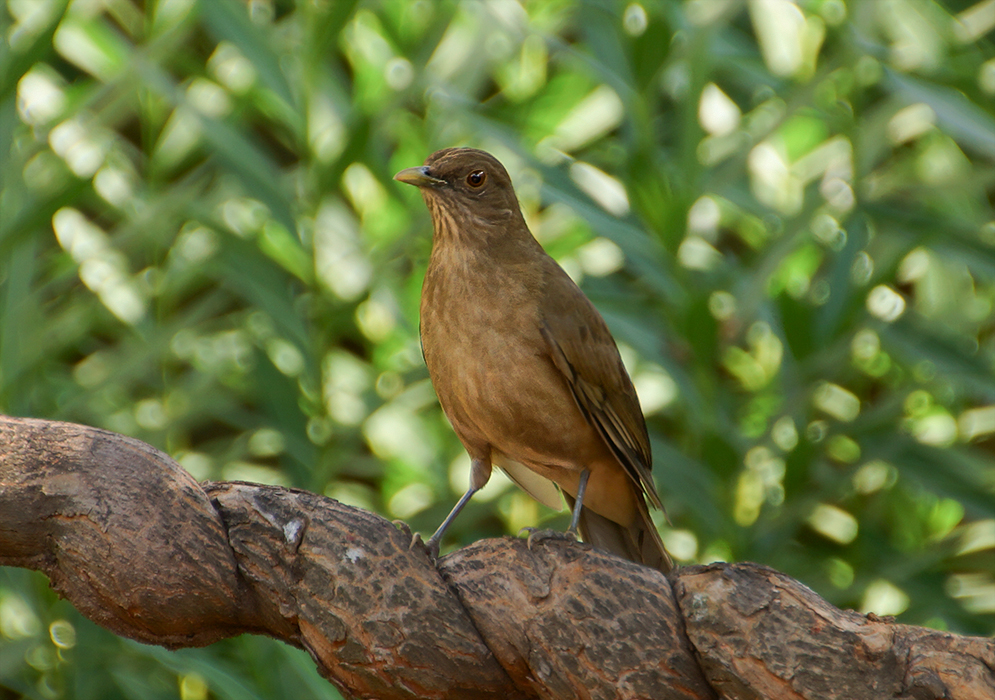This post has 11 Simple Fields-fields attached. Show fields.

The clay-colored thrush is a common bird of the thrush family, Turdidae. It is the national bird of Costa Rica, where it is affectionately known as the yigüirro. The species is distributed from South Texas, where its range is rapidly expanding, to northern Colombia. In many areas of its range, the clay-colored thrush is familiar in yards and gardens, living in close proximity to human settlements. The clay-colored thrush measures about 9.1–10.6 inches in length and weighs around 2.6–2.7 ounces. Its plumage is generally brownish, lighter below than above, with the lightest coloration on the flanks. Birds from more humid regions tend to be darker than those from drier areas. Notably, the throat is faintly streaked, and immature birds exhibit faint mottling on the back and underparts. The bird's bill is greenish-yellow with a dark base, the legs are pinkish or flesh-colored, and the irises are reddish, serving as useful identification points. The clay-colored thrush typically forages for fruit or invertebrates on or near the ground, either alone or in pairs, although flocks may feed high in fruiting trees. It also follows army ants to feed on small prey disturbed by the ant columns. The bird builds a heavy cup nest of grass, moss, feathers, leaves, and mud on a firm support above the ground, including human-made structures like windowsills. It lays 2 to 4 pale blue eggs with red-brown and gray markings between March and July and may double-brood. The species is known for aggressively defending its nest, even against large raptors like golden eagles, but is not particularly territorial otherwise. An interesting aspect of its behavior is its response to brood parasites; it is one of the few bird species that are partial ejectors of parasitic eggs, with only about 25% of individuals ejecting eggs of the bronzed cowbird.
The global population of the clay-colored thrush is estimated to be around 20 million mature individuals and is thought to be stable. In 1977, Costa Ricans chose the yigüirro as a national symbol, valuing its strong and melodious song that heralds the start of the rainy season. The species' tendency to live near houses and settlements has made it familiar to the general population since the early history of Costa Rica.
I could not find specific information on whether the clay-colored thrush is used as a pet or is commercially raised. However, the species is known to visit backyard feeders, especially if provided with oranges and jellies. Photographed in Barranquilla, Colombia.

